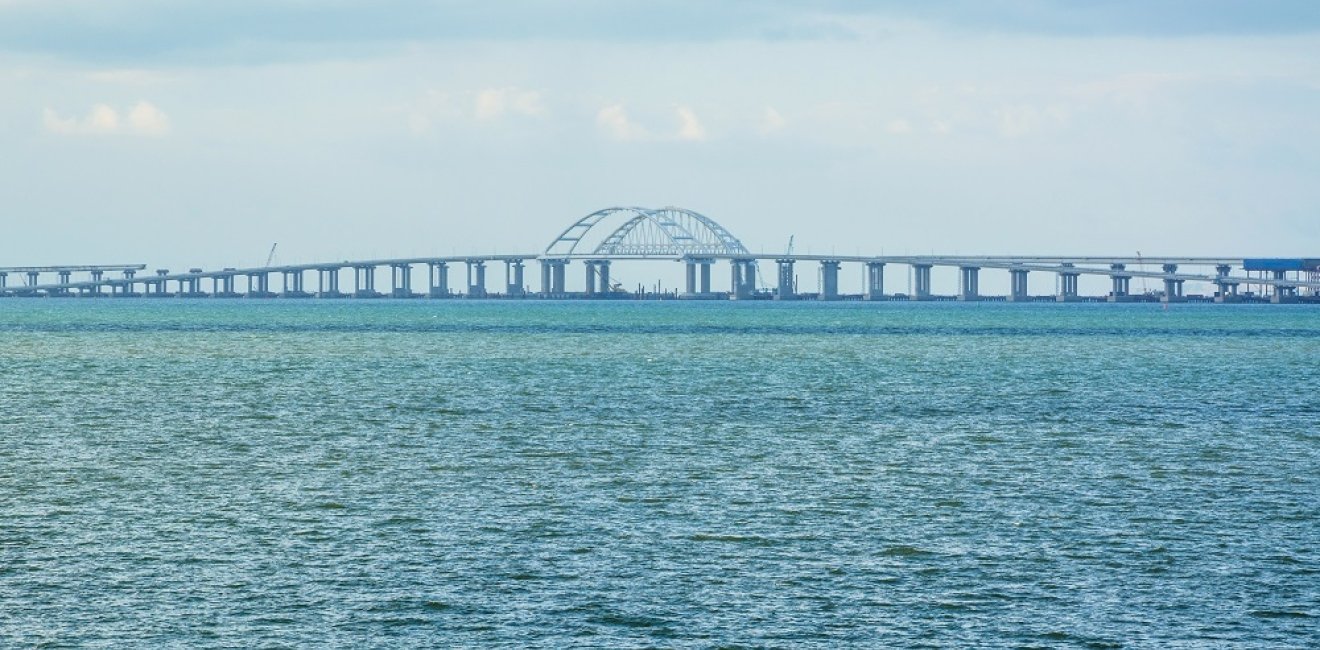
A blog of the Kennan Institute
BY ANDRIAN PROKIP
During a November 25–26 night session, the National Security and Defense Council of Ukraine (NSDC) agreed to propose that a state of martial law be imposed in Ukraine for 60 days. President Petro Poroshenko immediately supported the proposal and addressed the Verkhovna Rada the next day, offering to make it official.
The decision was sparked by an incident in which three Ukrainian naval vessels and 23 crew members were seized by Russian forces in the Kerch Strait, the only entrance to the Sea of Azov, on November 25. After months of tension in the region, this action struck many observers as an act of open war. Both countries have freely used the Sea of Azov for more than two decades, in keeping with a cooperation agreement reached between Russia and Ukraine in 2003. During the attack, the Russian forces rammed a Ukrainian tugboat and fired on the vessels, injuring up to six Ukrainian soldiers. The vessels were then transported to ports controlled by the Russian military.
Imposing a state of martial law in Ukraine requires parliamentary approval. Parliament was in session the afternoon of November 26 but lacked the votes needed to approve 60 days of martial law. The proposal triggered huge debates, mostly by Yuliya Tymoshenko’s and Oleh Liashko’s factions in parliament.
In response to the opposition’s objections, Poroshenko proposed a new term of 30 days (beginning on November 28) for only the ten oblasts of Ukraine that border Russia and Moldova (in the Transnistria region). The Verkhovna Rada approved this proposal. The next decision it approved was to hold presidential elections on March 31, 2019, as planned. The timing is important: under Ukrainian law, elections may not be held while martial law is in effect, absent a specific decision to the contrary by the president or parliament.
During the NSDC session, Poroshenko insisted that Ukraine would not start an offensive war but simply defend its territory. The state of martial law also would not change the mission and location of the Joint Forces Operation, which monitors the situation in the zone of hostilities in Ukraine’s East (it is the successor to the Anti-Terrorist Operation). His assertions raised questions about the practicality of a short-term martial law status unaccompanied by changes to the nation’s defense policy.
It is not immediately clear whose idea it was originally to establish martial law—President Poroshenko’s, NSDC Secretary Oleksandr Turchynov’s, or a top military official’s. Right from the start of the annexation of Crimea, Turchynov (who was acting president after Viktor Yanukovych fled the country) was among a small number of officials who supported the idea of martial law. This suggests at a minimum that he might have been in favor of the idea in this case.
In general, developments surrounding the establishment of martial law progressed extremely quickly, within just 24 hours. The NSDC broadcast its session online, which was unusual. Though Ukraine has experienced other hot moments, such as the March 2014 annexation of Crimea and the battles at Ilovaisk later that year, the NSDC discussions devoted to these matters were not broadcast. Even more interesting, top officials, including the president, had previously sought to persuade citizens that establishing a state of martial law would reflect poorly on the country. These officials feared that the IMF would be reluctant to lend funds or that Ukraine would not receive military assistance, among other concerns.
It is not known exactly how President Poroshenko arrived at the decision or what role, if any, Turchynov played in persuading him to make it. The NSDC serves as an advisory body to the president on security and defense issues. Formally, the president of Ukraine is the head of the NSDC, and it is up to him to accept or reject the NSDC’s proposals. It does appear, however, that the decision had been made by the time of the NSDC’s meeting, which otherwise would not have been broadcast online. It is possible that the decision was made at the meeting of the Military Cabinet, a body the NSDC established in 2015, which had met two hours before the NSDC. But even if the idea of establishing martial law was not initially President Poroshenko’s and he was persuaded by Turchynov, one thing is clear: contrary to what some have argued, Poroshenko did not intend to use martial law as a PR move.
There is no doubt that Ukraine needs to strengthen its army and must respond to any attempt at a military attack similar to what occurred in the Kerch Strait. Failure to respond to the incident would have conveyed a military weakness and indecision on the part of authorities. But responses to aggressive adversarial moves should be conducted in such a way as to forestall speculation about political motivation and make it difficult for political elites to twist the situation to their own ends, especially in the run-up to presidential elections. Otherwise, trust in the president as the supreme commander-in-chief could be undermined. From the political commentary already swirling around Ukraine, it is obvious that Poroshenko’s motives for establishing martial law will be questioned.
Of course, Ukraine has been in a state of war for years because of military actions in eastern Ukraine since 2014. At the same time, the law “On the legal regime of the state of martial law” outlines some important changes in the daily life of the country. It stipulates that while the state of martial law is in effect, it is prohibited to:
- amend the constitution;
- hold presidential elections, elections for the Verkhovna Rada and local parliaments, and voting on referendums; and
- strike or hold large public gatherings.
Additionally, the law stipulates the possibility of restricting civil rights in the case of further Russian aggression. Among these restrictions, the state could establish a curfew or potentially restrict freedom of movement and privacy rights.
According to the law “On the election of the President of Ukraine,” the presidential campaign officially starts 90 days before the elections. Because the next elections will be held on March 31, 2019, campaigning may begin in the last days of 2018 (the Central Election Commission has not offered a direct comment on this yet). However, the state of martial law as approved will end prior to the 90-day window—and unofficial campaigning is in full swing.
The incident in the Sea of Azov prompted the president to elect a state of martial law as a major component of Ukraine’s response. However, Ukraine has experienced much more dire episodes in the war since 2014 and has never before come close to imposing martial law. Now, only a few months before the elections, when no one expected martial law to be on the table, it is suddenly a reality. Therefore it is not possible to exclude the possibility that some politicians, even those in the opposition, wanted to use the state of martial law in advance of the 2019 elections for their own purposes. The problem is that no one knows how the imposition of martial law for one month will affect a war that is entering its fifth year.
Author

Director, Energy Program, Ukrainian Institute for the Future

Kennan Institute
The Kennan Institute is the premier US center for advanced research on Eurasia and the oldest and largest regional program at the Woodrow Wilson International Center for Scholars. The Kennan Institute is committed to improving American understanding of Russia, Ukraine, Central Asia, the South Caucasus, and the surrounding region through research and exchange. Read more

Explore More in Focus Ukraine
Browse Focus Ukraine
Talking to the Dead to Heal the Living

Ukrainian Issue in Polish Elections


